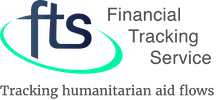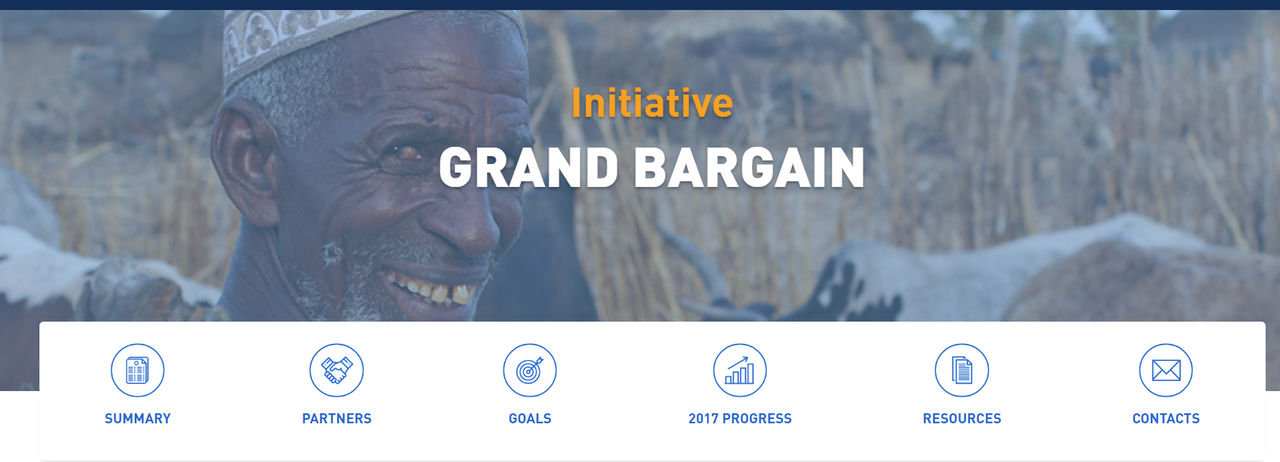Lessons from connecting IATI And FTS

This blog has been re-posted from the Centre for Humanitarian Data and has been written by Steven Flower, a consultant with the Centre and the IATI Chair of the Technical Advisory Group (TAG).
On 13-14 May, the Centre for Humanitarian Data and Development Initiatives will co-host a workshop on transparency, information sharing and data. The participants represent organizations that have committed to the Grand Bargain, an agreement between humanitarian donors and aid agencies focused on greater financial transparency and simplified reporting requirements.

During the workshop, Centre colleagues will share progress on our pilot project to improve automated financial-data sharing between donors and OCHA’s Financial Tracking Service (FTS). The Centre has been working with FTS to support ingesting data in the IATI format, providing a reliable, standardized and scalable approach to managing financial aid flows.
For those of you who aren’t deep into the work of aid flows, the International Aid Transparency Initiative (IATI) is an open publishing standard for development and humanitarian financial data. FTS reports on humanitarian funding pledges and contributions. IATI and FTS are important elements of the Grand Bargain’s focus on greater transparency.

Below is a look at what we have accomplished with the IATI-FTS pilot, including major wins, key challenges and learnings.
The work so far
Over the past year, five organizations have tested using the IATI standard to share data with FTS. These organizations include the International Rescue Committee (IRC), the Netherlands Ministry of Foreign Affairs (MFA), OCHA’s Country-based Pooled Funds (CBPF), the United Kingdom Department for International Development (DFID), and the United States Agency for International Development (USAID).
We have done the following:
- Worked with each of these publishing partners to check, improve and test their IATI data for use by FTS.
- Started to ingest data in various trials, ensuring both continuity for those reliant on data from FTS, while also gathering insights into how ‘ingestible’ IATI data is.
- Developed guidance on how to use the IATI standard for humanitarian reporting, which will provide a useful addition to the established guidelines.
- Enhanced and curated key humanitarian codelists (Humanitarian Response Plan (HRP) codes; HRP project lists).
IATI publishers have had to become data users. Given the various processes behind IATI and FTS data, organizations have had to focus on where differences in their outputs may occur.
Main successes
- Organizations have made expected and unexpected improvements to their IATI data. While adding the established humanitarian-specific fields to their IATI data was a known improvement, other changes came from ongoing analysis and discussion. For example, to optimize the ingestion of transaction data, a unique reference was discussed and trialed amongst the five publishers. We hope such improvements lead to more useful data for all, rather than just for FTS ingestion.
- IATI publishers have had to become data users. Given the various processes behind IATI and FTS data, organizations have had to focus on where differences in their outputs may occur. In turn, getting IATI data ‘into shape’ has highlighted the importance of using it. Organizations cannot ‘just do IATI’ and expect FTS to ingest it. They must understand what they are saying and doing with their data. CBPF, for example, added all donor contributions to their IATI data, and remodeled their allocations to include ‘total grant’ as a commitment transaction. This has only come from considering how their data is to be used by others.
- Data ingestion has led to some automation. As we have tested and triangulated IATI data within the FTS system, the longer-term efficiencies become more apparent. We will be able to create an algorithm to spot patterns both within IATI data and other sources. With this, we will have an indication of how IATI ingestion can automate some workflows, whilst freeing up time on the vital manual curation that is often needed.
Challenges faced
- IATI data differs between IATI publishers. While a standard is certainly helpful to harmonize format and structure, the actual data differs in terms of scope and detail. The nature of an ‘IATI activity’ varies across—and sometimes within—each of our five initial partners. Hence, it becomes unrealistic to envisage automating IATI completely.
- Organizations already express the same data differently. For most organizations, FTS and IATI data is the responsibility of different teams or people. When analyzing these two sources, we have found subtle and significant discrepancies between their composition. One financial flow in FTS could be made up of several IATI transactions. Consensus is needed on what data is relevant.
- Humanitarian planning information does not always reflect operational data. We have run into this from several angles with the ‘project code.’ Projects are vital for understanding the intention of humanitarian plans, which are in turn crucial for FTS to chart their progression. But there is often a disconnect between the data on the projects and the data on delivery. Connecting these dots is a challenge, but not the sole domain of our pilot.
There is a strong appetite for integration. Our pilot publishers have invested time and money to make this work.
Key learnings
- There is no magic button. We cannot expect the availability of machine-readable IATI data to eradicate what came before. In the beginning, that seemed more plausible, since the key ask was to just do IATI. However, we will need to address the new challenges that have emerged, specifically in terms of the data contract between the producer and user.
- Collaboration improves data literacy. The FTS team has a long established set of relationships with a wide variety of humanitarian actors. Introducing a data standard into the mix can be uncomfortable and challenging to regular workflows. We have learned that iteration and discussion between users can lead to a mutual understanding of needs.
- There is a strong appetite for integration. Our pilot publishers have invested time and money to make this work. There is a real demand to avoid the ‘dual reporting’ of data, in line with the goals of the Grand Bargain. Demonstrating good practice will incentivize others to take similar steps and harmonize data outputs.
Next steps
While publishing data is an important part of the transparency commitment, data needs to be accessible and usable for better decision-making, accountability and learning. By July 2019, we hope that all five pilot organizations will be ‘flowing’ their IATI data into FTS, through automated or semi-automated processes.

The long-term goal is for organizations to use the IATI format to report on both their development and humanitarian spending. To support this, we will produce a report with guidance on how other organizations can replicate FTS reporting with IATI data.
In an effort to make IATI activity data more accessible to humanitarians, the Centre has added country-based datasets of current IATI aid activities to the Humanitarian Data Exchange (HDX) site. The Centre is also supporting internal discussions about how best to coordinate OCHA’s IATI data sharing, including internal corporate reporting.
If you have suggestions for how the Centre can help make IATI data more useful to the humanitarian community, please send an email to [email protected]. We are grateful to the Netherlands, US and UK governments for supporting this project.